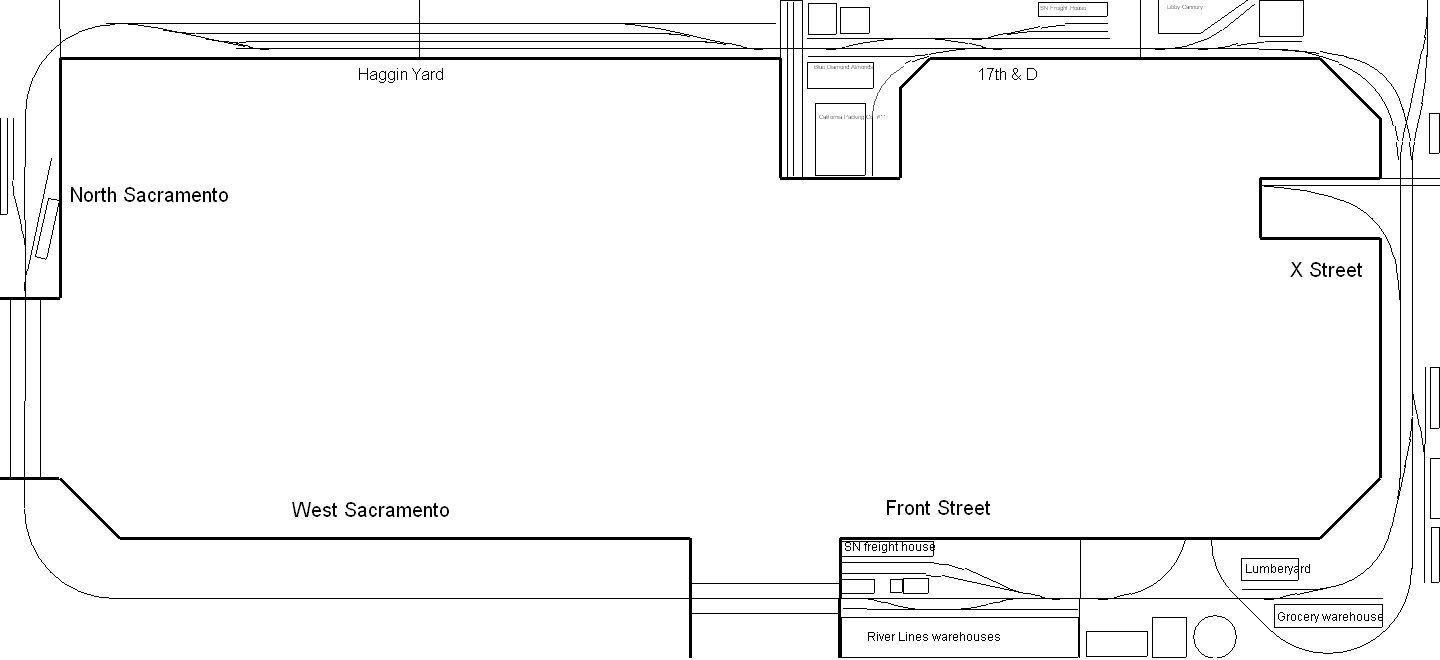I promised to post this about a year ago but finally got around to downloading XTrkCAD; this is the first track plan I have completed with it. It’s not exact, but I wanted to sketch out a rough approximation of my layout so far and what I haven’t built yet.
The plan below is my under-construction layout.

Givens & druthers:
Scale: HO
Prototpe: Sacramento Northern Railway, formerly an electric interurban turned diesel freight railroad, owned by Western Pacific. Industrial belt line operating around Sacramento, CA.
Era: Approximately 1950-1960
Track: Code 100, primarily Peco “Setrack” sharp-radius turnouts. Minimum radius 15" on mainline, 12" on sidings.
Motive power: General Electric 44 and 70 ton locomotives, S1, SW1, GP-7, SW-7
Main industries: Agricultural products, including canneries, almond packing, dairy, beverages, grain mills, and meat packing. Interchange traffic between Southern Pacific and Western Pacific; function as a “bridge” railroad between SP and WP.
Signaling: None. All trackage on layout is within yard limits.
Wiring: Simple DC. Eventually I may go DCC, and am trying to make wiring robust enough to do so. Turnouts are power-routing.
So far I have the upper wall pretty much complete: a double-ended, four-track yard (Haggin Yard) with a capacity of 42 cars if I don’t block the mainline (56 if I do), not counting RIP and caboose tracks. The 17th & D area is a three-track locomotive storage yard and freight house, with industrial trackage to reach a cannery, almond packing plant, dairy and beverage bottling plant, with a runaround track. Libby Cannery is a large cannery with one track for incoming refrigerator cars and another for boxcars carrying out canned goods.
The area marked “West Sacramento” is not yet planned…there will be eith